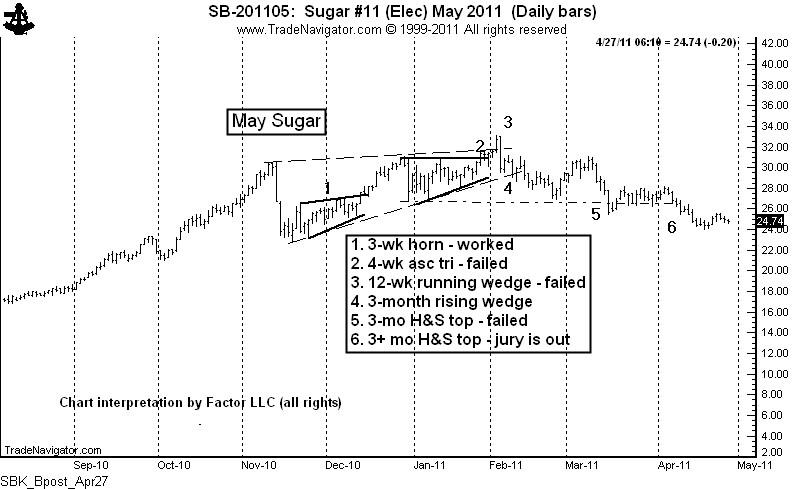Has chart trading become unreliable?
Charts don’t work like they used to!
This is the first of three blog postings on the (un)reliability of chart patterns for trading. This posting lays the claim that chart patterns are increasingly unreliable for trading. The second posting (when I get to it) will pose the possible reasons why this has occurred. The third posting will address solutions to the problem.
I’ve traded futures and forex on the sole basis of classical chart formations since 1980. I have not used volume or open interest, Commitment of Traders data, moving averages, oscillators, or any of the “latest and greatest” technical indicators. In fact, I am not a fan of indicators because they are simply derivatives of price. My attitude has been, “Why study derivatives of price when I can study and must trade price itself?” If you disagree with me and have been consistently successful, your success speaks for itself. In the business of trading, everyone must find their own niche that works.
If anybody has earned the right to speak about chart patterns, I think I should at least be on the short list. My conclusion – chart patterns are far, far, far more unreliable today than at any other time in my trading history.
There was a time (in the 1980s – many of you were not even born then) when as a chartist I would enter a trade based on a classical chart pattern and mentally and emotionally “bank” the profits. Patterns were extremely reliable. But, when patterns did not work, at least traders on the other side of the market made money! If I am long and wrong, I want traders who are short to make money. That is the way it should work. The worst possible trading environment, in my opinion, is when both long and short position traders are eating humble pie.
There is one other dimension to this. In the “good olde days,” when a chart pattern failed it told me something important about the market. Now, patterns just fail and provide no lessons. I have never been a very good “range” trader.
My guess (I wish I had kept good data back then) is that 50-plus percent of chart patterns worked in the 1980s. I define “working” as reaching the measured-move target without digging back into the completed pattern. Usually patterns worked immediately and decisively.
In recent years only 25 percent of patterns have worked. We have entered a period I call “chart morphing.” This may represent the new norm. Chart morphing occurs when one identified chart pattern breaks out, but fails, only to become a component of a larger chart pattern, that in turn breaks out, but fails, only to become a component of a larger chart pattern, etc., etc.
The following chart of Sugar demonstrates this chart morphing concept. In this case I identified and traded six patterns in real time. Only one delivered a profit. There was a time when three or four of six patterns, not one of six, would have delivered a trend to the implied target. We now have a six-month trading range in Sugar with no clue as to the next dominant chart pattern. As a chartist you may have labeled May Sugar in an entirely different way. That’s what makes a market.
The above reality of chart morphing is that a trader can lose 80 points in a 30-point trading range over a sequence of trades and months only to become gun shy just in time for the real breakout to occur. If you are a chart trader, is this a world you can relate to?
Does all this mean that classical charting is no longer a valid way to trade? Not at all! It does mean that the time frames, tactics and money management principles of using charts must be modified. I will have more to say about these things in future posts.
###





Trackbacks & Pingbacks
[…] 19 days in length. I'll make price projections once I get confirmation and enter the trade.The chart patterns are in place and I'm waiting for confirmation before entering. Although the situa…on the daily chart of approximately 19 days in length. I'll make price projections once I get […]
[…] Algorithms, The Fed’s Statement, and Chart Trading by Joeyfishface on April 27, 2011 Lots of speculation this morning regarding how the algorithms (program traders) are likely to react to Bernanke’s press conference. “Flash Crash” articles are popping up and Peter Brandt chimed in. […]
Leave a Reply
Want to join the discussion?Feel free to contribute!